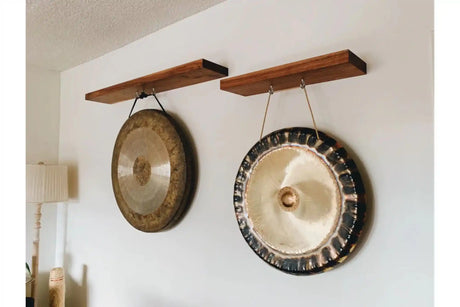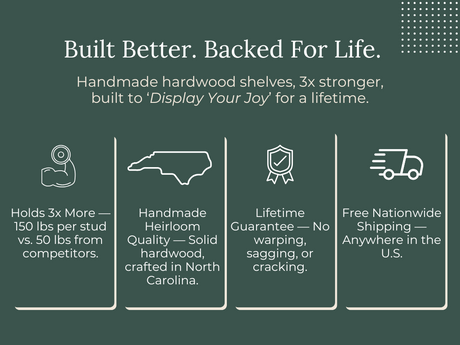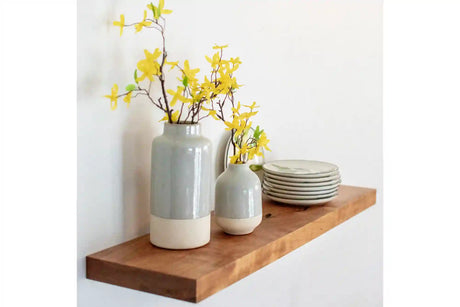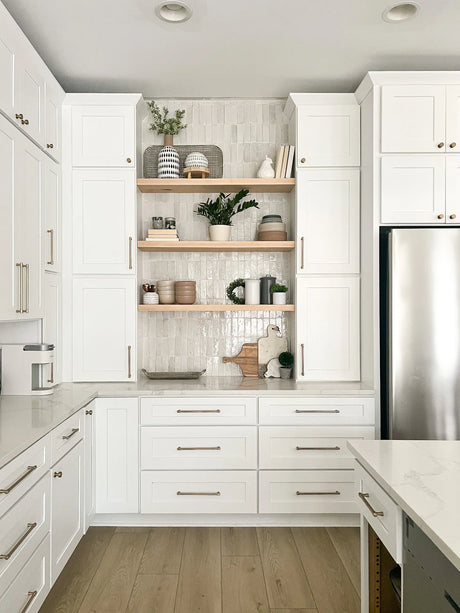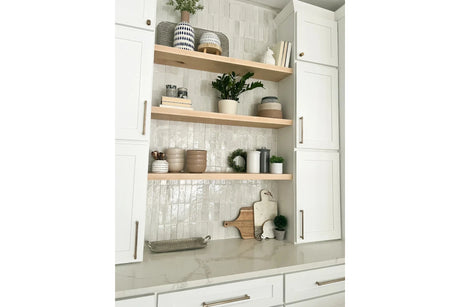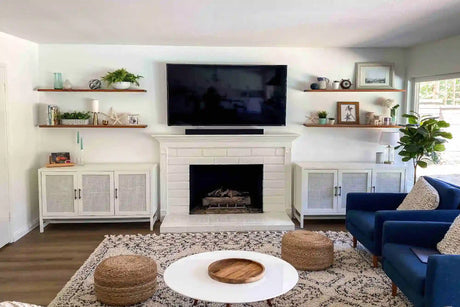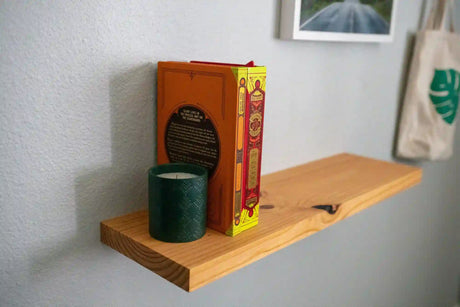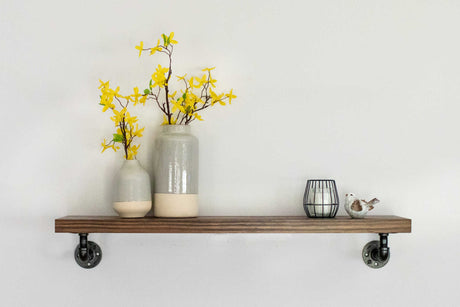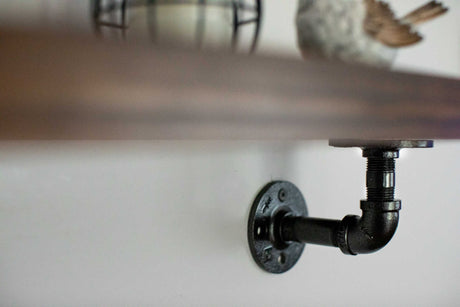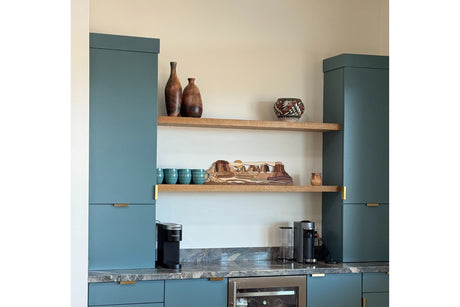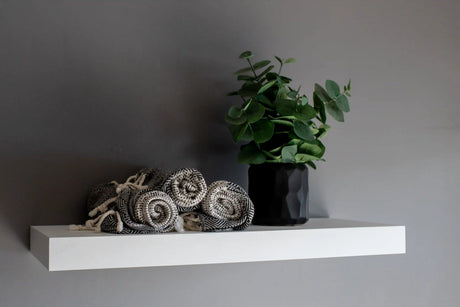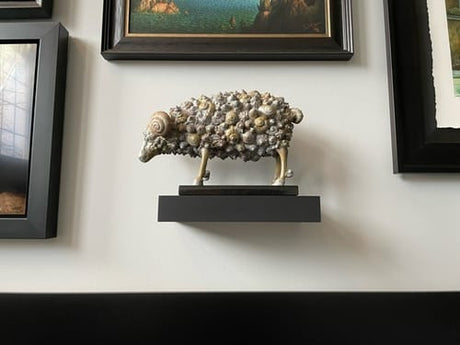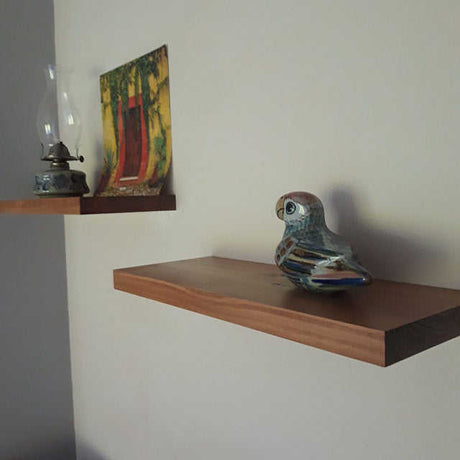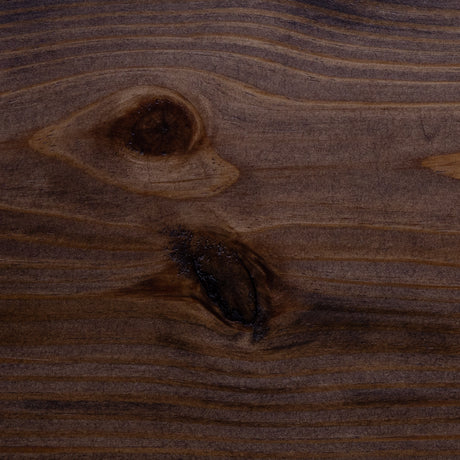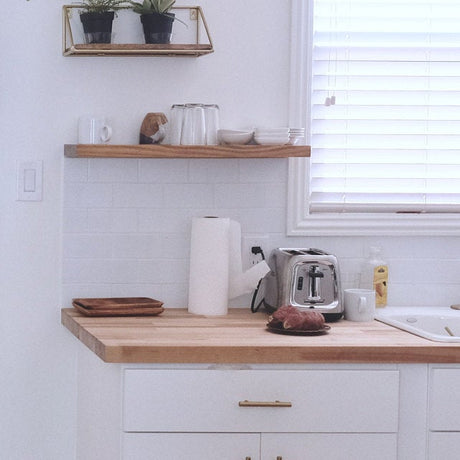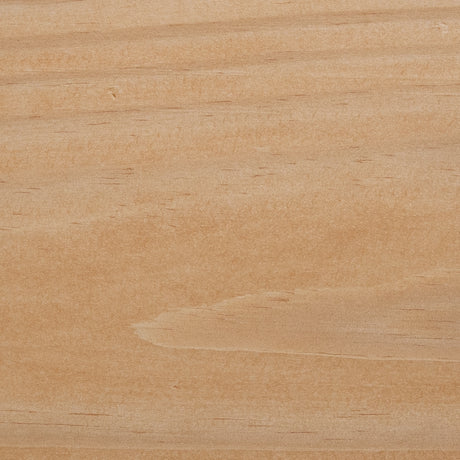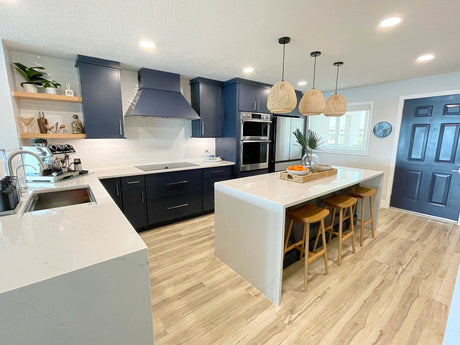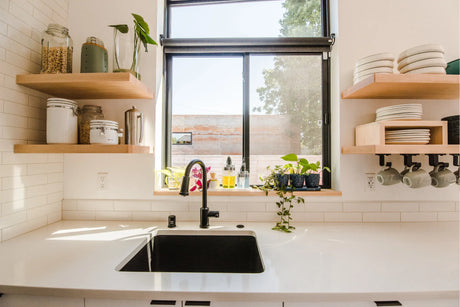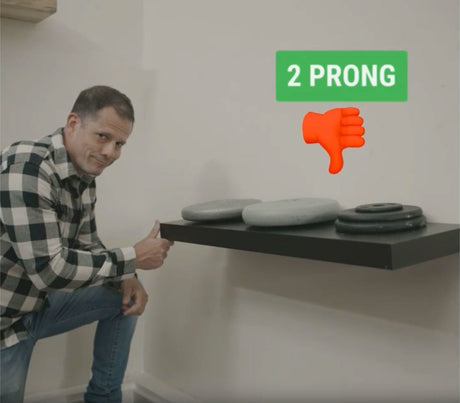Okay, let’s get this out of the way: yes, we’re a floating shelf company, and yes, we’re about to tell you why floating shelves might not be the best fit for you. Sounds a little backwards, right? But here’s the deal—we’d rather you love your shelves for the next 20 years than regret buying them after six months.
So while we think floating shelves are pretty fantastic (and clearly, we’ve built a whole business around them), we’re not going to pretend they’re flawless. Let’s look at the good, the bad, and the slightly dusty.
The Advantages of Floating Shelves
Clean, Minimal Look
No chunky brackets or clunky cabinets, just smooth hardwood and your favorite things on display. They work in just about any style of home—from modern to farmhouse—and they always look intentional.
They Make Spaces Feel Bigger
Cabinets eat up visual space. Shelves don’t. If you’re working with a small kitchen or a tight bathroom, floating shelves can open things up and keep everything feeling light.
Ways floating shelves make a room feel larger:
- They keep sightlines open with no bulky cabinet boxes.
- They reflect light better, especially in small or dark kitchens.
- They give the illusion of more space by showing more wall surface.
- They create breathing room in tight layouts like galley kitchens.

Custom Made to Fit Your Space
Our shelves can be built to nearly any size, so you’re not stuck with whatever’s on a big-box store shelf. Want an 8’ run of walnut across a wall? Done. Want a little 18" nook shelf for coffee mugs? Also done.
Things you can customize with floating shelves:
- Length and depth to perfectly fit your wall or alcove.
- Wood species like walnut, white oak, maple, or cherry.
- Finish to match your cabinets, floors, or furniture.
- Edge style from clean modern to slightly rounded.
- Special features like routered LED channels or live edges.

Stronger Than They Look
Not all floating shelves are flimsy. With the right brackets (we use the Hovr Bracket System, which holds 150 lbs per stud), these things can handle real-world use: dishes, books, even cast iron skillets.
The Disadvantages of Floating Shelves
Limited Storage
Here’s the thing: shelves don’t have doors. If you’re dreaming of hiding away mismatched Tupperware or stacks of junk mail, shelves aren’t your solution. They’re about display, not storage.
Dust (and a Little Kitchen Grease) Happens
Floating shelves collect dust a little faster than cabinets. And if they’re installed near your stove or cooktop, there’s another fun twist: aerosols from cooking oils can settle on them, leaving a thin, sticky film that loves to cling to wood and whatever’s on display. Translation: the closer your shelves are to the action, the more often you’ll be wiping them down.
Some ways to cut down on the extra cleaning:
- Keep cooking-area shelves a little higher up or offset from the stove.
- Stick to items that can be easily rinsed or wiped down (glassware, ceramics).
- Use your lowest shelves for décor instead of everyday kitchen items.
- Give everything a quick dust/wipe as part of your regular kitchen routine.

Installation Can Be Tricky
These aren’t the kind of shelves you throw up with two drywall anchors and call it a day. Walls need to be flat, studs need to be in the right place, and brackets need to be solid. A bowed wall? It’s fixable, but it makes things a little more interesting.
Weight Limits (With Standard Brackets)
Most “budget” shelves out there can’t handle much more than a few picture frames. Put dinner plates or cookbooks on them and they’ll sag like a hammock. That’s why we harp on using professional-grade brackets—because otherwise, shelves are just decorative ledges.
Not Everyone Loves the Look
We get it. Some people want maximum storage and zero visual clutter. Floating shelves lean toward the modern, minimal side of design, and if that’s not your thing, cabinets are probably a better fit.
Our Take
So, why would a shelf company point out the downsides of its own product? Simple: because we don’t want you to buy shelves you’ll regret. Floating shelves are amazing in the right context—but they’re not for every kitchen, every wall, or every person.
Here’s a quick checklist to see if they’re right for you:
- You want open, airy style over maximum hidden storage.
- You’re okay with regular dusting (and wiping if they’re near the stove).
- You’ve got solid walls and studs in the right place.
- You like displaying your favorite things rather than hiding them away.
If you nodded along to most of those, floating shelves are probably a great fit. If you didn’t, cabinets might be the better call. Either way, we’d rather you make the right design choice for your home than settle for something you’ll regret.
And if you do decide floating shelves are the answer, we’ll make sure you get shelves that won’t sag, crack, or let you down.


